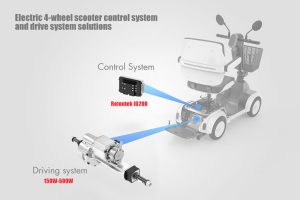Overview of Plunger Pumps
A plunger pump is a type of positive displacement pump where the high-pressure seal is stationary and a smooth cylindrical plunger slides through the seal. This design makes them different from piston pumps and allows them to handle higher pressures.
Role in Electric Powertrain Systems
Hydraulic Power Transmission
Plunger pumps in electric powertrain systems are primarily used for hydraulic power transmission. These pumps enable the conversion of electrical energy into hydraulic energy, which is essential for various functions in electric vehicles, such as brake systems and steering mechanisms.
Efficiency and Energy Savings
Key Efficiency Metrics
- Power Consumption: Plunger pumps are designed to operate at peak efficiency, often consuming less power compared to other pump types.
- Heat Generation: Reduced heat generation leads to lower energy losses.
- Hydraulic Fluid Flow: These pumps maintain a consistent fluid flow, which is crucial for the smooth operation of hydraulic systems.
Cost-Effectiveness and Lifecycle
Initial Cost and Maintenance
- Purchase Price: The average cost of a high-quality plunger pump ranges between $200 to $500, depending on specifications.
- Maintenance Expenses: Maintenance is typically low due to fewer moving parts, reducing long-term operational costs.
Durability and Lifespan
- Lifespan: A well-maintained plunger pump can last up to 10 years, depending on usage.
- Wear and Tear: The unique design minimizes wear, extending the pump's lifespan.
Technical Specifications and Performance
Dimensions and Weight
- Size: Plunger pumps used in electric powertrains are compact, often measuring around 6 inches in length and 4 inches in width.
- Weight: They are relatively lightweight, averaging about 5 pounds, which is advantageous for overall vehicle weight reduction.
Performance Parameters
- Pressure Range: These pumps can handle pressures up to 3000 psi.
- Flow Rate: The flow rate typically ranges from 1 to 10 gallons per minute, depending on the model.
Material and Quality
- Construction Material: Common materials include stainless steel and brass, ensuring corrosion resistance and durability.
- Quality Standards: Most plunger pumps adhere to ISO and other relevant industrial standards for quality and safety.

Advantages and Limitations
Advantages
- High Pressure Capability: Ideal for systems requiring high-pressure operation.
- Energy Efficiency: Contributes to the overall energy efficiency of the electric powertrain.
- Compact Design: Suitable for space-constrained applications.
Limitations and Challenges
- Noise Levels: Can be noisier than other pump types, which might require additional noise reduction measures.
- Cost: While cost-effective in the long run, the initial investment is higher compared to some other pump types.